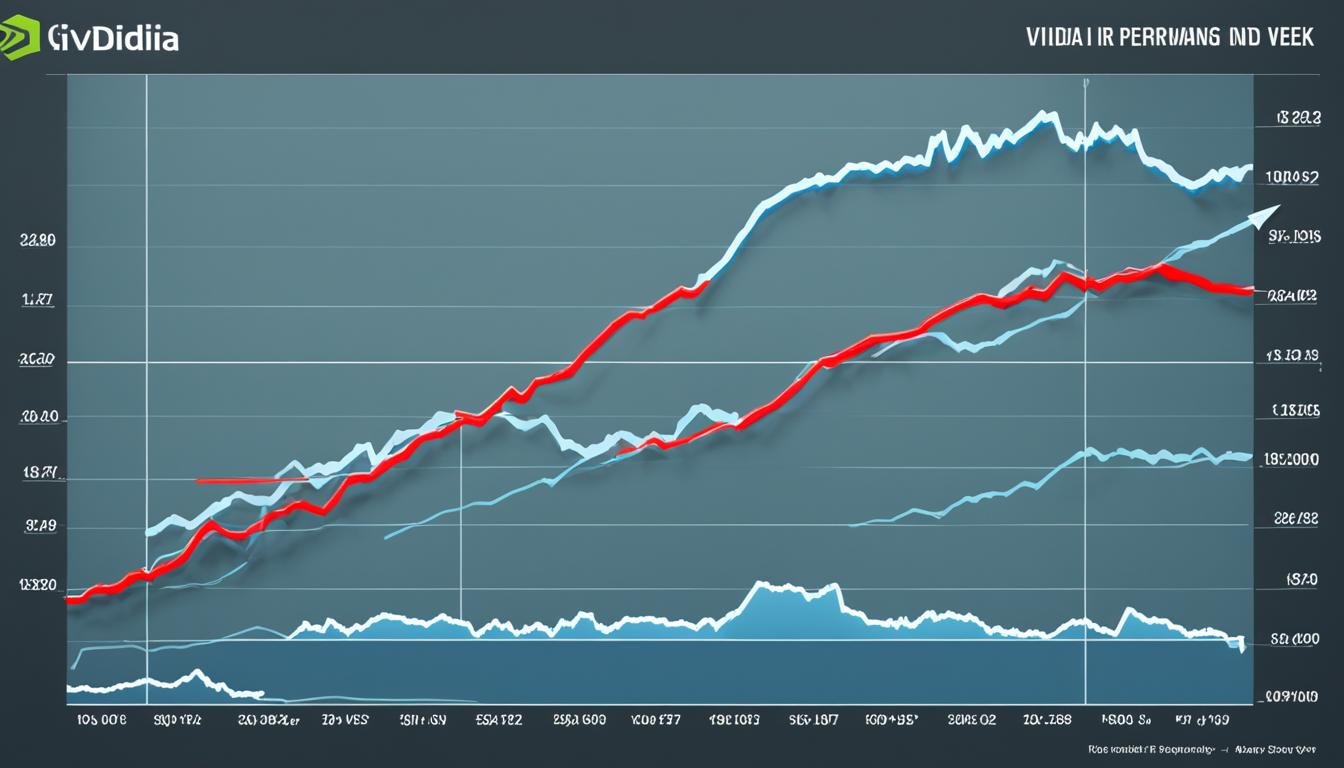Navigating Sticky Inflation: Implications for the Fed’s Soft Landing
Sticky inflation, a persistence of high inflation rates, poses a potential risk to the Federal Reserve’s goal of achieving a smooth economic descent, commonly known as a “soft landing.” The impact of inflation on the future financial landscape cannot be ignored. Let’s examine the current situation and its implications.
Stay tuned as we explore the relationship between sticky inflation, the Fed’s monetary policy, and its potential impact on economic outlook and interest rates. Understanding these key factors is crucial for investors and individuals navigating the uncertain financial landscape. By staying informed and proactive, you can adapt your investment strategies to minimize the impact of sticky inflation on your financial well-being.
Understanding Inflation and the Fed’s Role
Inflation, an essential concept in economics, refers to the steady increase in the general level of prices over time. As prices rise, the purchasing power of a currency decreases, impacting consumers and businesses alike. To manage inflation and promote economic stability, the Federal Reserve (commonly known as the Fed) plays a crucial role through its monetary policy decisions.
The Fed primarily utilizes adjustments to interest rates as a tool to regulate inflation. By raising or lowering interest rates, the Fed influences borrowing costs, which subsequently impacts consumer spending and investment. When inflation is too high, the Fed may choose to increase interest rates to cool down the economy and reduce spending. Conversely, in times of low inflation or economic downturn, the Fed may lower interest rates to stimulate borrowing and encourage economic growth.
Monetary policy, the term used to describe the Fed’s actions regarding interest rates and money supply, affects the overall economic landscape. By maintaining an appropriate balance of supply and demand, the Fed aims to keep inflation under control and promote sustainable economic growth.
Understanding the connection between inflation and the Fed’s role is crucial for individuals and businesses in planning for the future. By monitoring the Fed’s monetary policy decisions and considering the potential impact on interest rates, one can make informed decisions about personal investments, borrowing, and financial strategies.
“The Federal Reserve’s ability to influence interest rates allows it to navigate inflationary pressures and promote economic stability.” – Financial Expert
To further explore the correlation between the Fed’s actions and inflation, consider the following examples:
Inflation and Monetary Policy
1. Interest Rates and Borrowing Costs: When the Fed raises interest rates, borrowing becomes more expensive. This increase in borrowing costs can dampen consumer spending and reduce business investments, potentially slowing down economic growth. Conversely, lowering interest rates encourages borrowing and spending, stimulating economic activity.
2. Impact on Interest-Sensitive Sectors: Adjustments in interest rates influence various sectors of the economy differently. For example, higher interest rates may affect industries such as housing and automobile manufacturing, as increased borrowing costs can deter consumers from making big-ticket purchases. Understanding these dynamics is vital for businesses and individuals in planning for future growth or contraction.
3. Expectations and Market Reactions: The Fed’s monetary policy decisions do not only depend on current inflation rates but also on future expectations. The market reaction to the Fed’s statements and actions can affect interest rates and investor sentiment. Market participants continuously analyze the Fed’s communications to make informed decisions regarding investments, portfolio allocations, and risk management.
With the Fed’s inflation management being a core focus, staying informed about changes in monetary policy, interest rates, and economic data is essential. By understanding inflation and the Fed’s role, individuals and businesses can better anticipate how these factors may impact their financial decisions and adjust their strategies accordingly.
Keep in mind that inflation and the Fed’s policies are complex topics, influenced by various economic indicators and factors beyond the scope of this section. However, having a basic understanding of inflation and the Fed’s role provides a solid foundation for further exploration and analysis.
The Challenges of Sticky Inflation

Sticky inflation poses unique challenges, especially during periods of economic recovery and evolving market trends. This persistent high inflation can disrupt the post-downturn rebound and create uncertainty in financial markets. The consequences of sticky inflation are far-reaching, impacting consumers’ purchasing power, businesses’ profitability, and potentially leading to wage and price spirals.
During times of economic recovery, it is crucial to strike a delicate balance between managing inflation and promoting growth. The prolonged presence of sticky inflation can hinder this balance, making it challenging for policymakers to achieve sustainable economic recovery and stability.
One of the primary concerns stemming from sticky inflation is its impact on consumers. As prices rise over an extended period, the purchasing power of individuals diminishes, affecting their ability to afford goods and services. This erosion of purchasing power can have profound implications for households, potentially limiting their consumption and overall economic activity.
Sticky inflation can disrupt the economic recovery and create uncertainty in financial markets.
Moreover, sticky inflation can also affect businesses. As the cost of inputs and raw materials rises, businesses may struggle to maintain profitability. Higher production costs may lead to companies passing on the burden to consumers through higher prices, exacerbating inflationary pressures further.
Additionally, sticky inflation can create wage and price spirals, where higher prices lead to demands for higher wages, which, in turn, contribute to further price increases. This spiral effect can fuel inflationary pressures and make it challenging to curb inflation rates effectively.
The Role of Market Trends
To navigate the challenges of sticky inflation, it is essential to consider market trends. Changing market conditions, such as shifts in consumer demand, supply chain disruptions, or global economic factors, can influence inflationary pressures. Monitoring and analyzing these trends can provide valuable insights for businesses and policymakers in developing strategies to address sticky inflation efficiently.
Market trends can signal potential risks or opportunities related to sticky inflation. By closely studying these trends, investors can make informed decisions about their portfolios and allocate their resources effectively. Diversifying investments across different asset classes and staying ahead of evolving market trends can help mitigate the impact of sticky inflation on investment returns.
Impact on the Fed’s Soft Landing Strategy
The Federal Reserve’s soft landing strategy is designed to achieve a smooth and gradual economic descent following a period of expansion. However, the presence of sticky inflation can potentially undermine this strategy, posing challenges to the Fed’s ability to navigate the economic outlook.
Sticky inflation refers to the persistence of high inflation rates over an extended period, despite economic recovery efforts. When inflation remains stubbornly high, it can disrupt the soft landing process and create uncertainty in the overall economic outlook. To combat sticky inflation, the Fed may be compelled to adjust its monetary policy by raising interest rates more aggressively.
Elevated interest rates aimed at curbing inflation can have significant implications for economic growth. While this approach can help mitigate inflationary pressures, it also carries the risk of undermining the soft landing strategy. Higher interest rates can dampen consumer spending and business investment, potentially slowing down economic activity and impeding a smooth economic descent.
The challenge for the Fed lies in striking a delicate balance between managing sticky inflation and ensuring a soft landing. The Fed must carefully assess the economic landscape, closely monitor inflationary trends, and make informed decisions regarding monetary policy.
“The Fed’s ability to successfully execute its soft landing strategy hinges on effectively addressing the challenge of sticky inflation. By closely monitoring economic indicators and employing appropriate measures, the Fed can navigate this complex landscape and foster sustainable growth.”
It is important for individuals, businesses, and investors to stay informed about the Fed’s actions and their potential impact on the economic outlook. By anticipating and adapting to changes in interest rates and market conditions, individuals can make informed decisions regarding their financial strategies.
Key Considerations:
- Keep an eye on the Fed’s communication and policy announcements to understand their stance on inflation and the soft landing strategy.
- Stay informed about economic data and indicators that provide insights into the overall economic outlook.
- Plan and adjust investment strategies based on potential shifts in interest rates and market trends.
- Consult with financial advisors who can provide guidance tailored to your individual circumstances and goals.
By staying proactive, vigilant, and adaptable, individuals can navigate the impact of sticky inflation on the Fed’s soft landing strategy and position themselves for financial success.
To gain further insights into the challenges posed by sticky inflation and its potential impact on the Federal Reserve’s soft landing strategy, consider exploring this insightful analysis from J.P. Morgan Asset Management.
Market Outlook and Investor Considerations

The presence of sticky inflation necessitates careful consideration of your investment strategy. As the Federal Reserve, commonly referred to as the Fed, grapples with the challenges of managing inflation, market trends are likely to fluctuate. To navigate the uncertain financial landscape, it’s imperative to keep a close eye on interest rate decisions, economic data, and the Fed’s communication to gauge their potential impact on various asset classes.
One effective approach for investors in times of sticky inflation is diversification. By spreading your investments across different asset classes, such as stocks, bonds, and real estate, you can mitigate risk and potentially capture gains even in turbulent market conditions. However, diversification alone is not enough; staying informed about market trends and adjusting your portfolio accordingly is key.
Monitoring interest rate decisions is paramount. As the Fed adjusts its monetary policy in response to inflation, interest rates may rise, affecting the borrowing costs for businesses and individuals. This, in turn, can impact stock prices, bond yields, and real estate values. By staying informed about interest rate changes, you can proactively adjust your investment allocations to seize opportunities or protect your portfolio from potential losses.
“The stock market is filled with individuals who know the price of everything, but the value of nothing.” – Philip Fisher
In addition to interest rates, keeping track of economic data is crucial. Indicators such as GDP growth, employment figures, and consumer spending provide insights into the overall health of the economy and can help you anticipate market trends. By monitoring these indicators and adjusting your investment strategy accordingly, you can position yourself to capitalize on opportunities or make informed decisions to protect your investments.
Considering Professional Guidance
Although staying informed and monitoring market trends are important, it can be overwhelming to navigate the complexities of investing during times of sticky inflation. Seeking guidance from a financial advisor can help you make well-informed decisions that align with your financial goals and risk tolerance.
A qualified financial advisor can assess your current portfolio, provide personalized recommendations, and help you stay focused on your long-term investment objectives. These professionals have the expertise and experience to navigate the challenging market landscape, leveraging their knowledge to guide you through uncertain times.
Remember, investing during periods of sticky inflation requires careful consideration and proactive decision-making. By diversifying your portfolio, staying informed about interest rate changes and economic data, and seeking guidance from a financial advisor, you can position yourself for success and better navigate the ever-evolving financial landscape.
In conclusion, sticky inflation poses a potential risk to the Federal Reserve’s soft landing strategy. The persistence of high inflation can disrupt economic recovery and pose challenges for investors. It is crucial for individuals to stay informed about economic trends, closely monitor the Fed’s actions, and adapt their investment strategies accordingly to navigate the ever-evolving financial landscape.
By staying vigilant and proactive, you can minimize the impact of sticky inflation on your financial well-being. Keep track of inflation indicators and reports, such as the Consumer Price Index (CPI), and pay attention to the Fed’s statements and interest rate decisions. Consider diversifying your investment portfolio to hedge against inflation risks and seek guidance from financial advisors.
Remember that managing financial risks and maintaining a balanced approach to your investments is essential, especially in periods of economic uncertainty. Stay updated on market trends, economic outlooks, and the latest monetary policy actions to make informed decisions. In the face of sticky inflation challenges, your knowledge and proactive actions can help you navigate the markets and protect your financial future.




